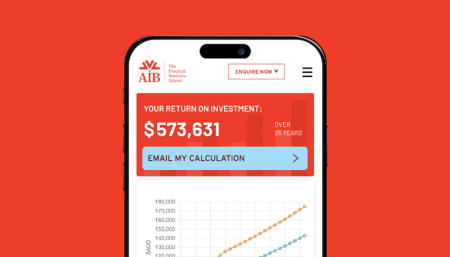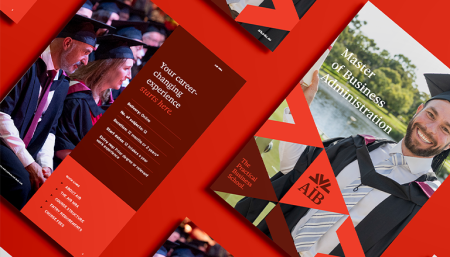5 Strategies to overcome communication overload

Are you distracted from an overflowing inbox that seems to haunt you 24/7? Do you struggle to keep up with all the Slack threads, zoom requests and messages you get in a day? Do you find yourself cringing at the dulcet tones of your mobile phone message notifications?
In this era of instant communications, social media and rapidly changing technologies, communication overload is becoming a very real and increasingly common issue. Read on to find out what communication overload is and learn 5 strategies to help reduce the overwhelm you’re feeling and to keep you focused on the top priorities in your work and life.
What is communication overload?
Communication overload occurs when you have more communication demands and channels than you can handle. In the workplace, you’re likely to experience communication overload when you’re overwhelmed by excessive emails, instant messages, phone calls, texts and social media updates.
What are the effects of communication overload?
Communication overload can seem like a minor gripe, or at least something that we all have to put up with; but in fact it can have seriously detrimental effects in the workplace, such as:
- Reduced productivity due to constant interruption and context-shifting.
- Communication overload can be enervating, sapping staff of their mental energy.
- Analysis-paralysis or decision fatigue can impair effective decision-making.
- Bury important information underneath communication “cruft”.
- Communication overload can also contribute to stress and burnout.
- Some research even suggests that it can lower your IQ by 10 points.
How to deal with communication overload
So communication overload can be a real problem, but what can you do to overcome it? Here are five strategies we recommend for overcoming communication overload so you can reclaim your focus and productivity.
1. Check your emails at set intervals throughout the day
If you have some flexibility in your work, close your inbox or turn off notifications so you don’t get prompted every time an email is delivered. Then use your time strategically and focus on your priority tasks in blocks of time throughout the day without interruption.
You can still check your email often and be responsive, but is it really necessary to respond to every email within 30 seconds? Probably not.
2. Create folders in your inbox to triage important information
In the same way that triage works in a hospital to determine priority patients, creating folders in your inbox can help you to prioritise and usefully categorise incoming mail in order of importance.
Consider the following folder categories to help you get started:
- Urgent
- Useful resources
- Reading
- Personal
- To action
To make life easier, check out how to set up “rules” in Microsoft Outlook to automate the above processes and leave you a cleaner Inbox for better prioritisation.
3. Turn off social media notifications
Smartphones make our personal and professional lives easier in many ways, but if you’re glancing at your phone every minute of every day and responding to Facebook and LinkedIn notifications as they happen immediately, then it’s time to take it back a notch and reassess your priorities.
Social media can be a great tool for business and a modern-day gem for keeping in touch. Turning off your social notifications doesn’t mean you will be any less connected, but instead you can check notifications at times during your day that suits your schedule and priorities. It means checking all of your notifications at once when you consciously log into Facebook, and not receiving 50 notifications each day as they happen. The secret is to create habits which put you in control of your notifications, not the other way around.
You can follow this instruction on how to turn off notifications for your computer, either Windows or Mac.
4. Choose your communication channels wisely
Email is a critical tool in many businesses, but if you’re trying to avoid communication overload, just be sure you’re choosing your own communication channels wisely and with intention. Sometimes we default to email because it’s easier.
At times, however, it will be more effective to pick up the phone and actually speak with someone, rather than start an email conversation that can go back and forth for days. Keep this in mind, and don’t add to the communication overload of others in the workplace. You may find, too, that if you’re more mindful of the communication demands you’re putting on other people, the more mindful they are towards you in return.
5. Book in communication detox days
If you’ve implemented the previous 4 strategies and you’re still feeling the communication overload in your life, then it’s probably time to book in some communication detox days.
You know those days where you actually switch off everything and your only focus is rest and relaxation? Sometimes it’s not easy to escape the rat race, and it’s even tougher to switch every device you have off for a period of time. Perhaps it’s a fear of missing out, or perhaps it’s habit, but either way, communication overload is a real thing that you, as a busy professional, need to manage. So switch on your out of office messages, and get off the grid for a day every so often. The world will go on without you and you’ll be glad you did.
How do you manage communication overload?
How do you combat communication overload in your professional and personal life? We’d love to hear your strategies for toning down the noise and focusing on what is truly important. Comment below to join the conversation.
This article was written by Ellenor Day-Lutz on behalf of the Australian Institute of Business. All opinions are that of the writer and do not necessarily reflect the opinion of AIB.




